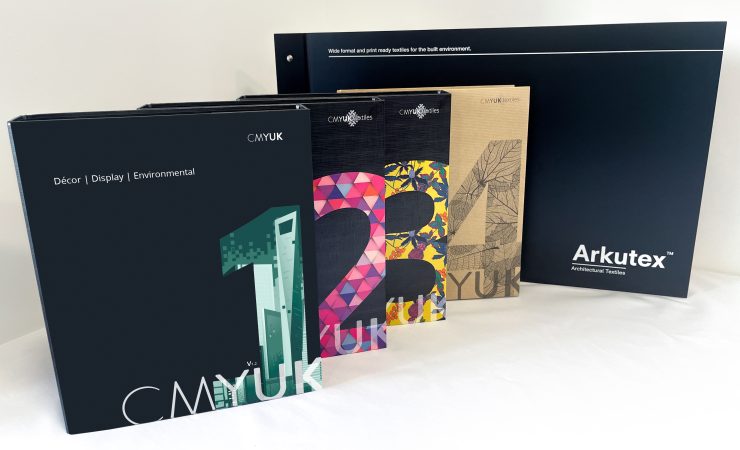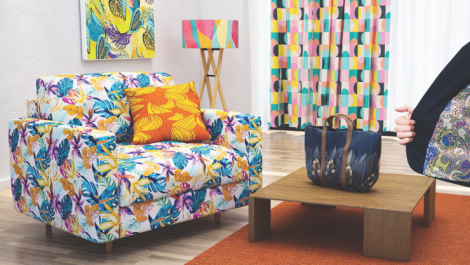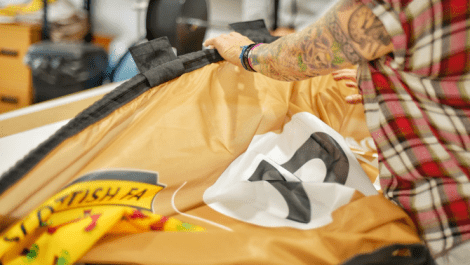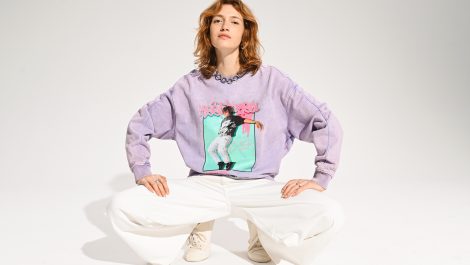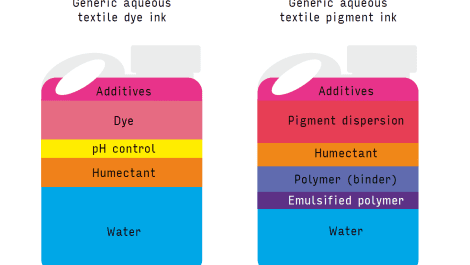Digitally-printed textiles for architectural applications look like being as much of a no-brainer as they are for retail display, with their advantages of easy transport, robust handling, and rapid installation and replacement. Michael Walker spoke to CMYUK to learn more
CMYUK is a reseller of wide-format printing equipment for EFI, HP, Mimaki and other manufacturers, plus ancillary equipment and substrates, with the business founded in 2002, and currently claims to be the largest reseller in the UK in this sector. The company has been involved for the last 10 years with textiles, having entered the sector via display graphics.
‘There has been a huge shift in substrates here,’ says managing director Robin East, explaining how he and business development manager Michael Crook recently went to the EuroShop retail show where all the exhibition displays were textiles. ‘The days of three-day chippy build with studwork, walls and vinyls are all gone; 90% of the surfaces in events and exhibitions has shifted,’ he confirms, though adding that they thought it would happen around 10 years ago, so in some respects this seems a late development.
Mr East says that CMYUK has ‘curated’ over 85% of the available materials for signage and display down to about a dozen, to help simplify matters when advising the business’s customers. ‘Customers want a definition of key applications,’ he says, giving as an example the UFabrik range, which suits front- or back-lit panels, flags, display, tents or tablecloths.
Four years ago the company diversified into architectural textiles, calling it ‘surface textiles for the built environment’. Handled under the company’s Arkutex division, these serve two markets: architects, and architectural design and build, the latter relating to an aesthetic focus on working and living spaces.
Mr East says that things have ‘changed incredibly’ since the Covid pandemic, in terms of both home and working environments, and particularly what will attract people back into the office. ‘Textile has offered the ability to fabricate, quickly and cleanly in a space, with huge cost savings and sustainability benefits,’ he summarises.
Skin deep
The idea here is to work back from the ‘skin’ that the occupants see. Using textiles in this way means that building services such as gas, water and electric/data cabling can be surface mounted and don’t have to be hidden within or behind the walls. Acoustic barriers can be placed behind the skin, for example, to provide sound-proofing and to control reverberation within a room.
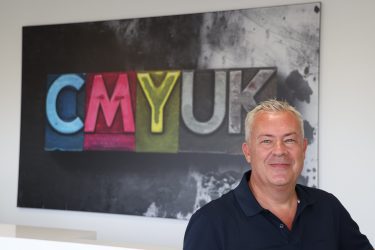
Robin East – textiles can allow a complete room makeover in a day
Mr East notes that even rooms with 2.6m ceiling heights can be dressed with one-piece graphics (not difficult if you have a 3.2m printer), in plain colours or branded/decorative designs. Hotel and conference centres can brand or theme specifically for a launch, which is quite a breakthrough as they typically run a five-to 10 -year wallpaper/pain replacement cycle, which is both messy and time-consuming.
‘Textiles can do this in a day, and polyester-based materials are also recyclable after use,’ notes Mr East, adding that all these eco-benefits also apply in events and exhibition work too. Rather than fixed permanent structures, these can be created using BeMatrix exhibition framing systems which join together without bolts, and have track systems built-in ready for silicone-edged textiles to be mounted. Errors in sizing no longer requires trimming or worse, re-making of rigid panels; textile graphics can be over-sized to allow for this or stretched to fit. They can also be sized to 5m wide by the roll length for very large single-piece applications. ‘Once fitted they look incredible,’ says Mr East.
Michael Crook explains that the principal textile ranges handled by CMYUK are Pongs, made in Germany, used for soft signage, UFabrik for signage and display and Taya Groups’ Kavalan materials for PVC banner replacement. All of these are exclusive to CMYUK. ‘It’s a growing market,’ he says.
The advantages of textiles for these types of application seem undeniable, from the ease of packing and transport to the rapid installation, removal and eventual disposal of the substrate, and it’s an application area worth exploring for anyone with a dye sublimation roll-fed printer.

